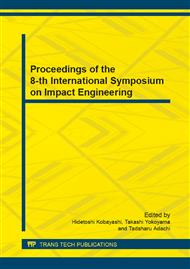p.457
p.463
p.468
p.474
p.480
p.486
p.493
p.499
p.505
Numerical Analysis of Vehicle Occupant Responses during Rear Impact Using a Human Body Model
Abstract:
Understanding vehicle occupant responses during real-world rear collision accidents is very important in the development of appropriate safety technologies for neck injury lessening. In this study, numerical analysis of vehicle occupant responses during rear impact were conducted by using a human multi-body model, a seat finite element model and crash accelerations obtained from real-world accidents. The human multi-body model was developed based on the body characteristics of a typical Japanese male, including the outer body geometry, inertial properties of body segments and passive joint characteristics. The seat finite element model was extracted from a detailed car finite element model. A small modification was done to the seat model to deal with the rear impact simulations. The crash accelerations were obtained from the drive recorder database of rear collision accidents occurred in Japan. Several crash accelerations were selected and used as input conditions during the rear impact simulations. Kinematic responses of the occupants during the accidents can be reasonably predicted by the simulations. Furthermore, different level of accelerations leads to different kinematics responses that may cause variation in injury occurrence and injury severity.
Info:
Periodical:
Pages:
480-485
Citation:
Online since:
June 2014
Authors:
Price:
Сopyright:
© 2014 Trans Tech Publications Ltd. All Rights Reserved
Share:
Citation:


